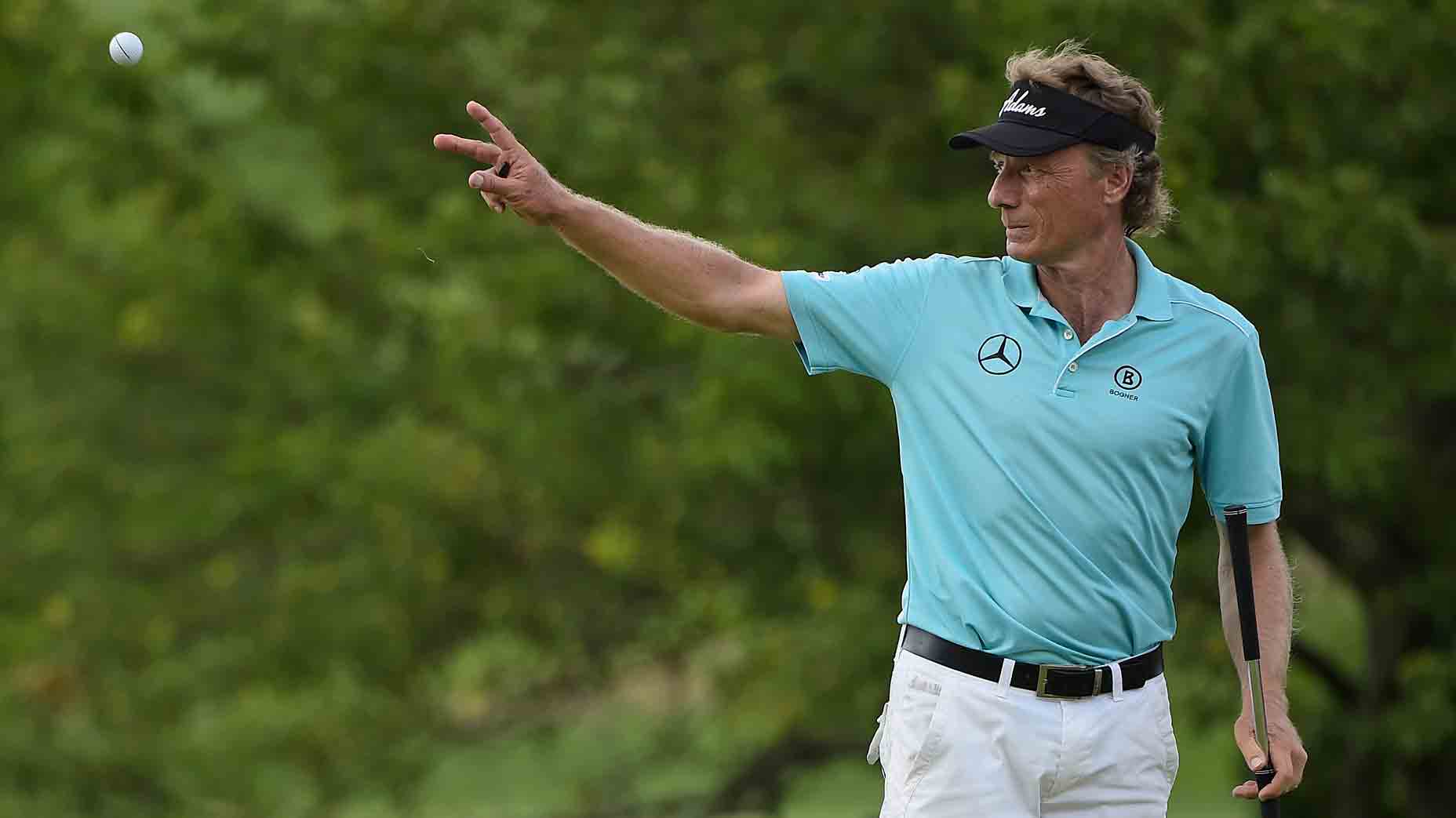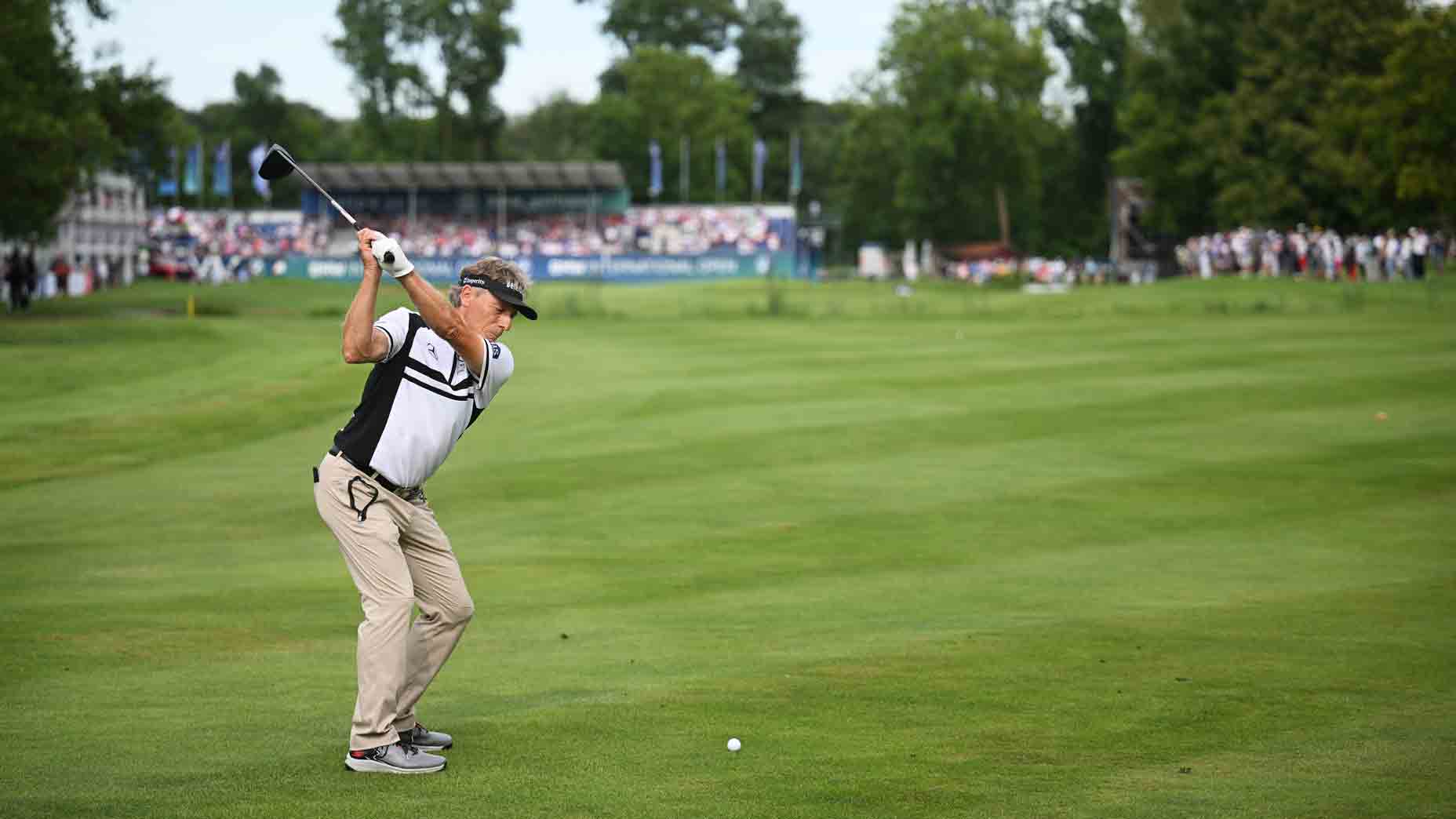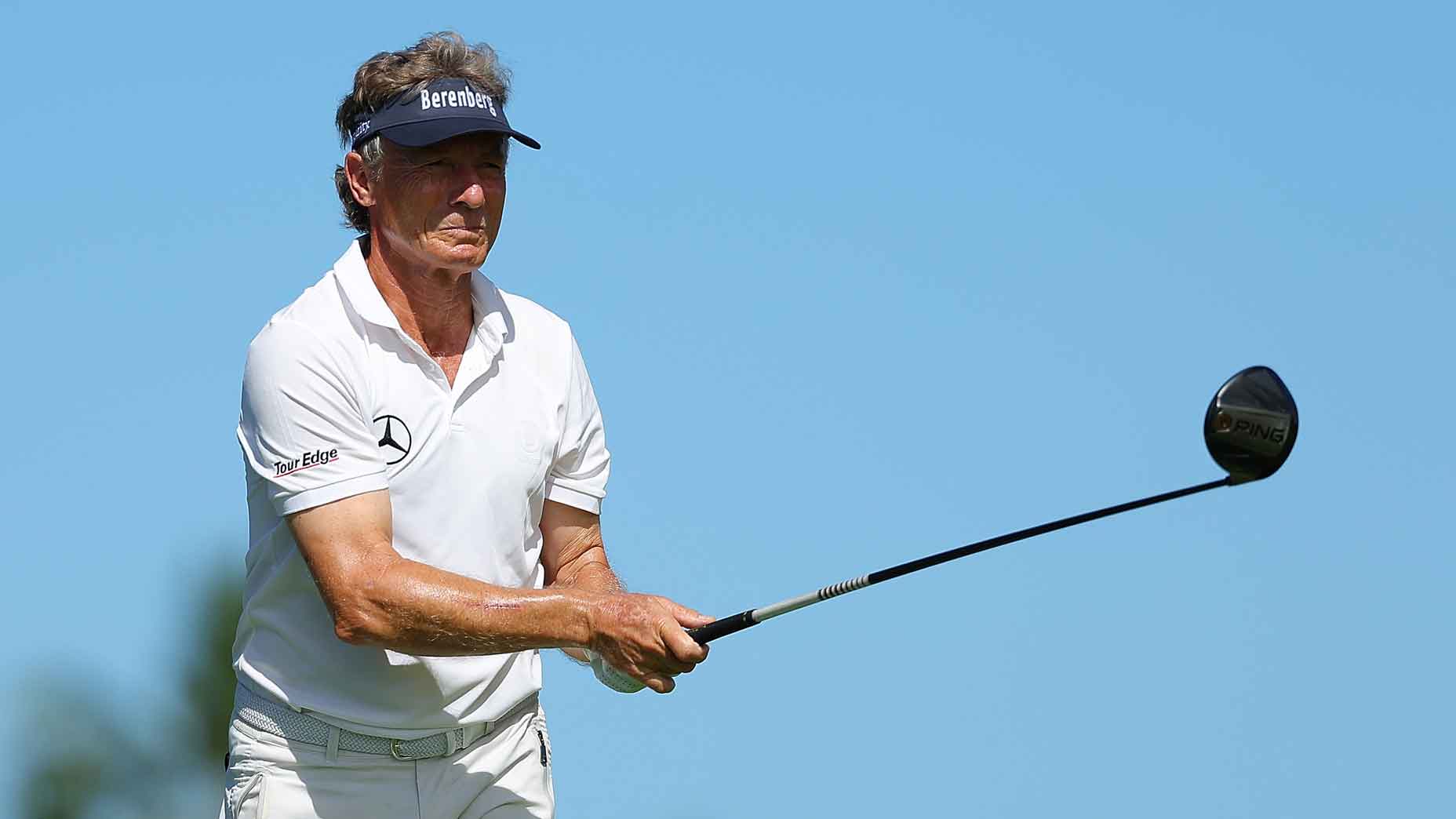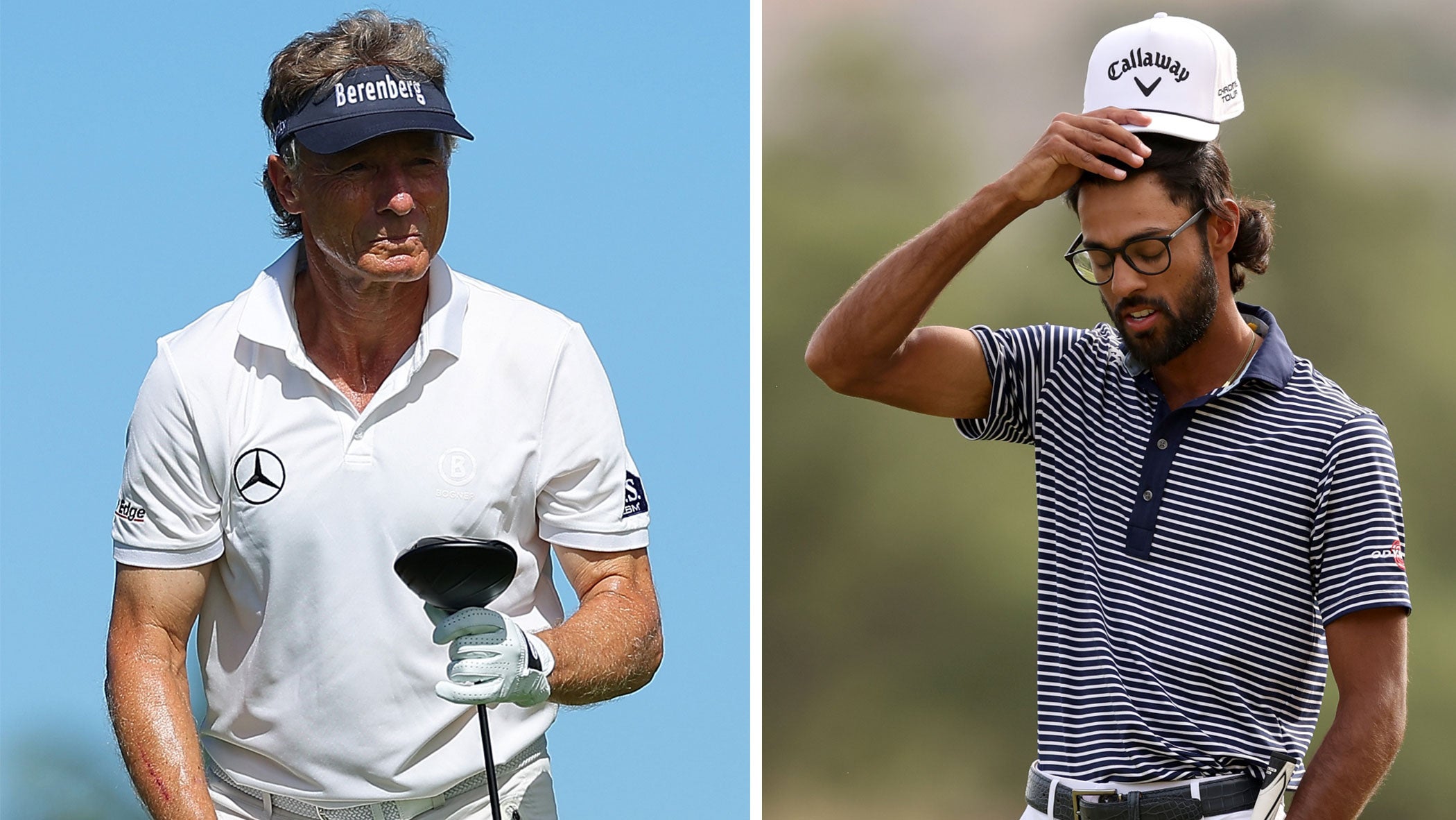Bernhard Langer’s fix for golf’s distance fight? Bigger golf balls and holes

Bernhard Langer has an idea for golf's distance fight.
Getty Images
Bernhard Langer, who soon could be playing a rolled-back golf ball, has another solution for golf’s distance fight.
Make the golf balls bigger, he says.
The holes, too.
“I don’t know if this has ever been discussed,” Langer said.
It perhaps has, though maybe not with the support of a two-time Masters winner. It also comes on the heels of a recent decision by the USGA and the R&A to roll-back the ball starting in January 2028 for pros and January 2030 for recreational golfers — so the thought is topical, though his suggestion may ultimately be just an idea in the effort to reign in increasing distance in the game.
Speaking this week in advance of his defense of the upcoming Chubb Classic on the Champions Tour, Langer also notably had thoughts against a move — of any kind. For clarity, they started when a reporter asked him this:
“I wanted to ask you a question about the proposed golf ball rollback by the USGA and the R&A. I know it’s about a year away, but I think it’s interesting, especially as you said earlier, that you do not play a power game; you play more of a precision game. How do you think this is going to be accepted across the world and across the tours when they actually do roll the ball back?”
Langer had a pair of concerns. They were related.
A ball rollback would sap excitement. Who doesn’t dig the long ball?
It would also strain manufacturers. Who wants a lower-distance ball?
“Yeah, that’s a great question,” he started, “and we’ve been debating this, what, 30 years now probably, when it all started. When Tiger Woods came along and hit it some distances that — well, Jack was really long, Nicklaus. But I personally feel some of the thrill of golf is to hit the ball far. … John Daly was one of the most prolific people playing golf, not just because he was entertaining with his golf, but he was hitting the ball further than anybody else, and same with Tiger and same whoever hits the ball very far has a large following, and not just out on Tour but any amateur that plays golf. They talk about how far they hit it. They don’t talk about, oh, I made a 30-foot putt or I had a chip-in or something or I made a par.
“They talk about the big drive they hit somewhere.”
Still, Langer said he’s seen the distances hit, and a trickle-down effect.
So he had another idea.
“I understand golf courses need to be longer, we use more water, we use more fertilizer. Nowadays, the golf course needs to be 7,500 [yards], used to be 6,500.
“I’ve designed some courses — I remember 30 years ago I designed bunkers at 240 yards, 250 yards from the back tee. Well, the good players don’t even sniff those; they fly it 50 over these. So it’s a predicament that’s not easy. Otherwise they would have solved the issue a long time ago.
“I don’t know if this has ever been discussed. I said, why not make the golf ball a little bit larger, all golf balls, so that it won’t go as far, quite as far. You push more air. You can make the golf hole a little bit bigger. You still face the same dilemma I’m talking about, but at least we’re playing the same golf ball. I’m one of millions who are discussing this, and I may not have the answer. I just see the problems we’re facing.”
In the interview, Langer was not asked how big either the ball or hole should be.
Notably, a ‘larger’ golf ball has been around for a while, though they’ve been fractionally bigger. Knowing that, though, what do the rules say?
For golf-ball size, there’s no limit how large it can go — to a degree. The complete rule reads this way: “The diameter of the ball must not be less than 1.680 inches (42.67 mm). The official test protocol uses a metal ring gauge suspended in perspex. It is important to note that there is no maximum size, the ball can be as large as desired provided it conforms to all other standards.”
And the hole size?
The definition of ‘hole’ reads this way:
“The finishing point on the putting green for the hole being played: The hole must be 4¼ inches (108 mm) in diameter and at least 4 inches (101.6 mm) deep. If a lining is used, its outer diameter must not exceed 4¼ inches (108 mm). The lining must be sunk at least 1 inch (25.4 mm) below the putting green surface, unless the nature of the soil requires that it be closer to the surface.”












